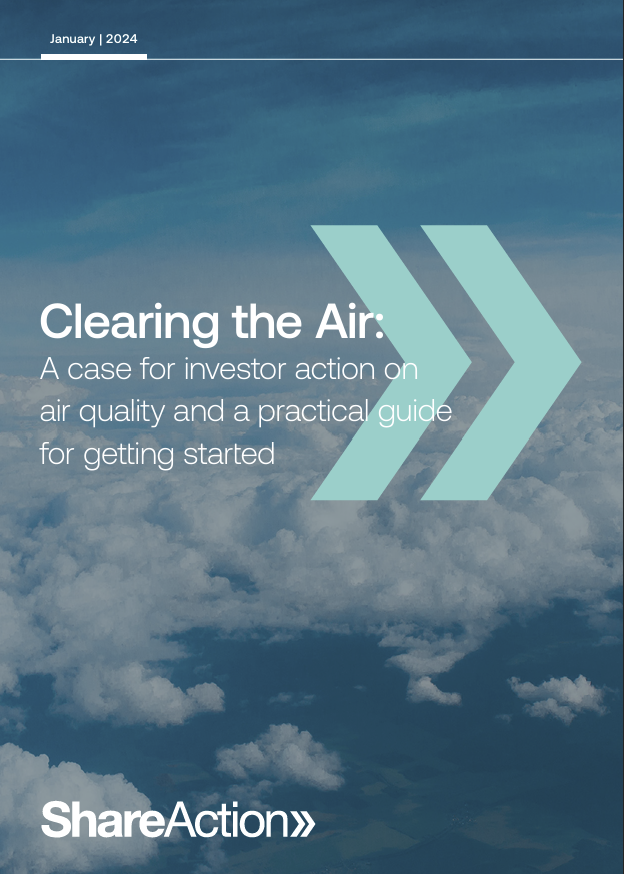Library | Sustainable Finance Practices
ESG strategy, analysis and integration
Tools and methodologies for embedding ESG considerations into investment strategy, analysis and decision-making, credit analysis, and insurance underwriting. These include applying different approaches, including positive and negative screening, ESG analysis and asset allocation.
Refine
270 results
REFINE
SHOW: 16


Putting pandemics behind us: Investing in one health to reduce risks of emerging infectious diseases
This report discusses One Health, an approach that recognises the interdependent nature of human, animal, and environmental health. It presents an investment framework designed to mobilise finance for pandemic prevention and reduce the risks of emerging infectious diseases.
Impact investing in biodiversity conservation with bonds: An analysis of financial and environmental risk
This report examines the financial and environmental risks associated with impact investing in biodiversity conservation through bonds. It evaluates five case studies, analysing the projects' theories of change, potential risks, and mitigation strategies. The findings highlight complexities in achieving both financial returns and conservation impact, with concerns about vague metrics and project uncertainties.
Integrating nutrition and obesity prevention considerations into institutional investment decisions regarding food companies: Australian investment sector perspectives
This study investigates views of stakeholders in the Australian investment sector on the incorporation of nutrition and obesity prevention considerations within institutional investment decision-making regarding food companies and identifies several key challenges and opportunities to the integration of nutrition and obesity prevention considerations.
Just transition criteria: How to align investments with a just transition
The report offers just transition criteria for investors, aligning products with climate action, socio-economic equity, and community involvement. It enhances existing frameworks, ensuring global alignment for a net-zero transition while emphasizing the three key elements: climate action, socio-economic equity, and community voice.
Fostering impact: An investor guide for engaging communities in place-based impact investing
This paper provides real-life cases and practical steps to integrate community engagement in investment processes. It offers methods for investors to identify and pursue community engagement opportunities, outlining different ways to incorporate engagement into investment decision-making.
The investor's guide to impact: Evidence-based advice for investors who want to change the world
This guide is for investors who want to generate positive social and environmental impact through their investments. It explains what investor impact is and how it differs from company impact. It also details the mechanisms through which investors can effect change, such as enabling the growth of impactful companies and encouraging improvement in less sustainable companies.
Impact investing for pensions
This report analyses the growth of impact investing strategies among European pension funds. The report examines challenges and opportunities, regulatory restrictions, impact measurement and management, private equity case studies, and emerging investments in affordable and social housing.
Impact investing 2.0: The way forward
This research aims to provide insights on the rapidly evolving impact investing landscape. The report is based on a survey of 12 high-performing impact investing funds that represent a diversity of asset classes, objectives, geographies, and impact areas.
The purpose action gap: The business imperative of ESG
This report examines the gap between what consumers and brands believe and how they act when it comes to purpose and sustainability. Based on studies of 2,500 consumers and interviews with 125 large consumer companies, the report offers valuable insights for businesses looking to meet consumer and investor expectations.
Consideration of social risks and opportunities by occupational pension schemes
The UK government is calling for evidence on how occupational pension schemes can appropriately consider financially material social risks and opportunities when making investment decisions. Trustees must adhere to legal requirements to take account of ESG factors in their policies but there is concern that they lack the knowledge to manage financially material social risks.
Wealthy private investors and socially responsible investing: The influence of reference groups
The study investigates how wealthy private investors engage with socially responsible investing (SRI) and how reference groups influence their investment behaviour. Qualitative data from 55 interviews with high-net-worth individuals (HNWIs) and industry experts show that while family members emphasize profit, fellow SRI-oriented HNWIs prioritise similarity and reputation.
Who pays for sustainability? An analysis of sustainability-linked bonds
This paper analyses sustainability-linked bonds (SLBs), which tie bond coupons to sustainability performance targets. They find issuing an SLB yields an average premium of -9 basis points on the yield at issue compared to a conventional bond, and the savings for an issuer exceed the maximum penalty for failure to meet the target.
The hidden risk in state pensions: Analysing state pensions’ responses to the climate crisis in proxy voting
This report analyses the proxy voting strategies of 19 state pensions, as well as the five New York City Comptroller systems, managing over US$2 trillion in assets. Results reveal that most pensions failed to address climate-related financial risk, especially in areas such as lobbying, environmental justice, and Indigenous rights.
Increasing female participation on boards: Effects on sustainability reporting
This study explores the relationship between board gender diversity and sustainability reporting using data from 2,116 banks over a ten-year period. Results indicate that having 22–50% female board members positively affects ESG disclosure, but beyond 50%, negative effects appear. It suggests that banks should mandate quotas to promote sustainable disclosure.
Clearing the air: A case for investor action on air quality and a practical guide for getting started
This report summarises the health implications, financial risks, and actions investors and companies can take to reduce air pollution emit. It also highlights existing regulations across the world as well as upcoming sustainability reporting standards.
Deconstructing ESG ratings performance: Risk and return for E, S and G by time horizon, sector, and weighting
This article evaluates the relevance of key environmental, social, and governance (ESG) issues and the importance of their pillars regarding risk and return using a comprehensive analysis of market performance. It additionally compares the weighting and performance of each pillar and key ESG issues.















